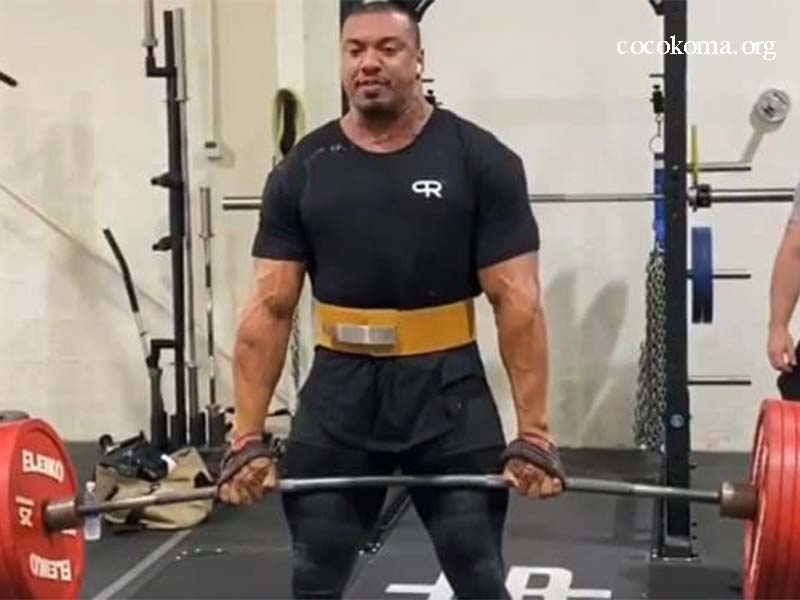In the world of fitness and gym culture, various terms, abbreviations, and phrases hold significant meaning for those who engage in strength training, bodybuilding, or general fitness programs. One such term is “PR,” a common acronym that you’ll often hear in conversations among gym-goers. But what exactly does PR mean in a gym setting? For fitness enthusiasts and beginners alike, understanding what PR means can be the key to unlocking your physical potential and setting new goals. This article will explore the concept of PR, its importance, and how it can transform your fitness journey.
What Does PR Mean in the Gym?
PR stands for Personal Record. In the gym, a personal record refers to the best performance or maximum weight a person has ever lifted in a specific exercise. It can be applied to different types of exercises, such as squats, deadlifts, bench presses, or even cardio activities like running a certain distance in the shortest time possible.
Why PR Is Important in Fitness
The importance of PRs goes beyond just lifting heavy weights. Setting and achieving PRs serves as a benchmark for progress in your fitness journey. Here are several reasons why setting personal records is vital:
- Tracking Progress: Achieving a PR allows you to track your performance over time. It serves as a measurable goal, helping you see where you’ve improved and areas that need more work.
- Boosts Motivation: Breaking a personal record in any exercise can give you a significant boost of confidence and motivation. The sense of accomplishment can propel you to keep pushing forward.
- Encourages Goal Setting: Setting PRs encourages individuals to develop specific, measurable fitness goals. Having clear objectives like increasing your PR in squats or bench presses creates a focus that pushes you to improve continuously.
- Builds Strength: Regularly striving for PRs encourages progressive overload, a key concept in strength training where you gradually increase the stress placed on your muscles. This helps in muscle growth and strength development.
- Helps Overcome Plateaus: Many gym-goers hit plateaus where progress seems to stagnate. Setting PRs can help break these plateaus by introducing new challenges and targets, giving you something to work toward.
Different Types of PRs in the Gym
When it comes to setting personal records, they can be achieved in various aspects of fitness, depending on your goals and workout routine. Let’s explore the different types of PRs you can aim for in the gym.
Strength PR
This is the most common form of PR and is focused on weightlifting. A strength PR refers to the maximum amount of weight you can lift for a specific exercise in one repetition, also known as a 1-rep max (1RM). For instance, if your PR for a deadlift is 300 lbs, that means 300 lbs is the maximum weight you’ve ever lifted in that exercise.
Strength PRs can be set for various lifts, including:
- Bench press
- Squat
- Deadlift
- Overhead press
Repetition PR
A repetition PR refers to the highest number of repetitions you can complete with a given weight. This is especially useful for individuals who focus on muscle endurance rather than just maximum strength. For example, if you’ve been able to perform 10 reps of a 150 lb squat, then breaking that to 12 reps would be your new PR.
Speed PR
This type of PR relates to how fast you can perform an exercise or cover a certain distance. Speed PRs are commonly set in cardio exercises like running, rowing, or cycling. For instance, running a mile in your fastest time or completing a certain number of jump ropes within a set time limit could be considered a speed PR.
Volume PR
Volume PRs are calculated based on the total amount of work done in a workout, combining weight, sets, and repetitions. If you lift a heavier total volume than in previous workouts, it counts as a volume PR. For instance, if you lifted 10,000 lbs across all your sets and reps during a previous workout and now achieve 12,000 lbs total, you’ve set a new volume PR.
How to Set and Break PRs in the Gym
Setting and breaking personal records requires strategy, patience, and consistency. Here are a few key steps you can take to hit your PRs and push your limits:
Progressive Overload
As mentioned earlier, progressive overload is key to building strength and setting new PRs. This involves gradually increasing the weight, reps, or intensity of your exercises over time. For instance, if you’ve been lifting 100 lbs for 5 reps, try to increase it by 5 lbs every week until you hit a new PR.
Proper Warm-Up
Warming up is essential to prevent injury and optimize your performance during a PR attempt. A good warm-up should involve dynamic stretching, light cardio, and lower-weight sets of the exercise you plan to PR on. This prepares your muscles and joints for heavier loads.
Focus on Technique
When aiming for a new PR, maintaining proper form and technique is crucial. Poor technique can lead to injury and impede your progress. Make sure to practice good form on every lift and consider working with a coach or trainer to perfect your technique.
Rest and Recovery
Muscle growth and strength improvements occur during rest, not while you’re working out. Make sure you’re getting enough sleep, and taking time for recovery between heavy workout sessions. Overtraining can prevent you from hitting new PRs.
Mental Preparation
Hitting a PR requires not just physical readiness, but also mental focus. Visualize yourself successfully completing the lift or exercise before attempting it. Positive self-talk and setting your mindset for success can make a big difference when pushing your limits.
How Often Should You Try to Set a PR?
It’s tempting to want to hit a new PR every time you walk into the gym, but this approach can lead to burnout and injury. So, how often should you aim to break your PRs?
For strength PRs, it’s generally recommended to attempt a new PR every 4-6 weeks, depending on your experience level and how well your body is adapting to your current training program. Beginners may experience faster progress, while experienced lifters might take more time between PR attempts.
For repetition or volume PRs, you can aim for these more frequently, perhaps once every 2-3 weeks, as these types of PRs put less strain on your nervous system compared to maximum strength PRs.
Common Mistakes to Avoid When Chasing PRs
When aiming to set new PRs, it’s essential to avoid some common mistakes that can derail your progress or lead to injury:
- Skipping Warm-Up: Attempting a PR without properly warming up is a recipe for disaster. Make sure to prepare your body with light weights and mobility exercises before attempting a heavy lift.
- Ignoring Form: Compromising on form to lift heavier weights can lead to serious injury. Focus on good technique and don’t sacrifice form for the sake of hitting a new PR.
- Overtraining: Your body needs time to recover between heavy lifts. Overtraining can stall your progress and increase the risk of injury. Listen to your body and give yourself enough rest.
- Inconsistent Programming: Without a structured workout plan, you may not make the steady progress needed to set new PRs. Stick to a well-designed program that includes progressive overload and deload weeks for recovery.
- Neglecting Nutrition: Fueling your body with the right nutrition is just as important as your workout routine. Make sure you’re consuming enough protein, carbohydrates, and healthy fats to support muscle recovery and growth.
How Hitting PRs Transforms Your Fitness Journey
Achieving new PRs does more than just help you lift heavier weights or run faster—it can completely transform your fitness journey. Here’s how:
- Builds Confidence: Every time you hit a new PR, it’s a reminder of your progress and potential. This boost in confidence can extend beyond the gym, helping you develop a positive mindset in other areas of life.
- Fosters Discipline: The process of working toward PRs requires consistency, discipline, and a focus on long-term goals. These habits can translate into other areas like work, relationships, and personal growth.
- Enhances Strength and Endurance: Regularly breaking PRs is a clear indication that you’re getting stronger and more physically capable. Whether you’re focused on strength, speed, or endurance, chasing PRs keeps you on a path of continuous improvement.
Conclusion
PR, or Personal Record, is a crucial concept in the gym that plays a significant role in tracking your progress and pushing you to reach new fitness milestones. Whether you’re a beginner or an advanced athlete, understanding and setting PRs can dramatically enhance your workouts and lead to lasting results. By focusing on proper training techniques, progressive overload, and mental preparation, you can set and break personal records, transforming not only your body but also your overall fitness journey. Embrace the challenge, stay consistent, and watch your fitness progress soar to new heights.








